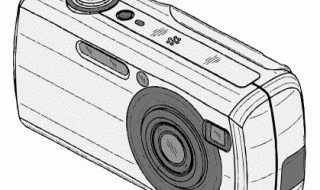If you own a digital camera, you may be able to add to its features, improve the quality of images the camera produces or make it more reliable by upgrading its firmware.
Digital cameras are special purpose computers. They include a CPU (Central Processing Unit) a video card (well, not actually a card, but the ability to produce the images & text that appears on your LCD), include the equivalent of ROM & RAM memory, an operating system and even the equivalent of your computer’s hard drive – the camera’s memory card. Unlike your desktop or laptop, the camera’s computer performs limited functions, so it is much smaller, and most of the parts that are separate in your full sized computer are miniaturized & combined to save space in your camera. Still, the modern digital camera easily has the computing power of laptops a few generations old.
Just as manufacturers often release updates to operating systems & application software, camera manufacturers often release updates to the camera’s operating system. The part of the camera’s electronics that can be upgraded is usually referred to as “Firmware“.
Although not all camera manufacturer’s provide firmware that can be upgraded by the consumer, many do. The first step is to determine which version of firmware is current loaded into your camera. Unfortunately, there is no across-the-board method of finding which version your camera is using. Some cameras show the firmware version during the “booting” process, that is as you turn on the camera. Others require you to use the camera’s menus to find the version. There are even cameras that require turning on the camera with a particular button pressed to reveal a diagnostics page that gives the firmware version. Your manual is the best place to start to find the steps necessary, however if the information is not in your manual, try a Google search using the model of your camera and the word firmware in the search field. This will often also provide links to different versions of firmware for your camera as well as downloading & installation instructions. A good time to look for new firmware is when a manufacturer releases a newer version of your camra. They will often provide a firmware upgrade that adds as many of the new features to the older model as possible.
If you camera’s firmware is up-to-date, no problem. If not, the next step is to determine if you need or want to upgrade. After all, you camera is probably working with the current firmware. Are the changes & improvements necessary for the way you use your camera? Check with the manufacturer for the list of changes the new firmware provides. If the firmware upgrade is recent, it is often worth waiting a few weeks for the “Pioneers” to comment on the effect of the upgrade. There have been cases where firmware upgrades caused problems the manufacturer did not foresee – let the pioneers discover them & wait for the “fix” from the manufacturer. Sites such as dpreview, Digital Camera Resource Page, Imaging Resource, and Steve’s Digicam are sites that both announce new firmware releases, and include forums where the results of new firmware installations are discussed. You also need to determine if the firmware is user upgradable. In many cases you will need to send the camera back to the manufacturer for upgrade. Again, it is up to you to determine whether the changes are worth the cost of the return. In other cases the manufacturer places the upgrade on their web site so that users can download & install it. So, if new downloadable firmware is available for your camera, why not jump right in?
Since it controls the operation of the camera, loading the wrong firmware into your camera can cause it to stop working. In the worse case, incorrect firmware or firmware improperly installed may require sending the camera back to the manufacturer to get it working again. Some suggestions to help you avoid this expensive problem:
- Always be sure the firmware upgrade is the correct one for your camera model.
- Always download firmware upgrades from the manufacturer’s website. Although there are user groups that may offer their own firmware upgrades, some are hacks that may cause far more problems than they solve.
- Because most digital cameras are sold worldwide, be sure the update comes from an authorized site for your countries version of the camera. Along the same lines, be sure you download a version in a language you understand. Unless you read Chinese, it would probably be a bad idea to update your camera with Chinese firmware!
- Make sure you read, understand and follow the manufacturer’s instruction for performing a firmware upgrade. For example, some cameras may require a 2 step process done in the correct order, some may not let you skip an upgrade version when going from a very early version to get to the latest version, others may. Again, if you don’t follow the instructions it is possible to turn your camera into a brick that can only be turned back into a camera by the manufacturer!
- Make sure you have new or fully charged batteries in your camera. If possible, use a laptop, or a desktop connected to a UPS (Uninterruptible Power Supply). If the camera or power to the computer dies during the upgrade, again it is likely you will turn your camera into a brick that only a trip to the manufacturer can fix.
Whether a point & shoot or the latest DSLR, properly installed firmware upgrades can often add many features & improvements to your camera, extending the time before you need to replace it with the latest model.
